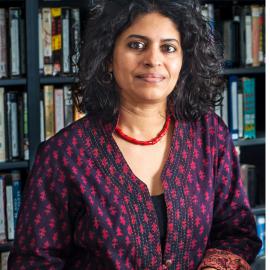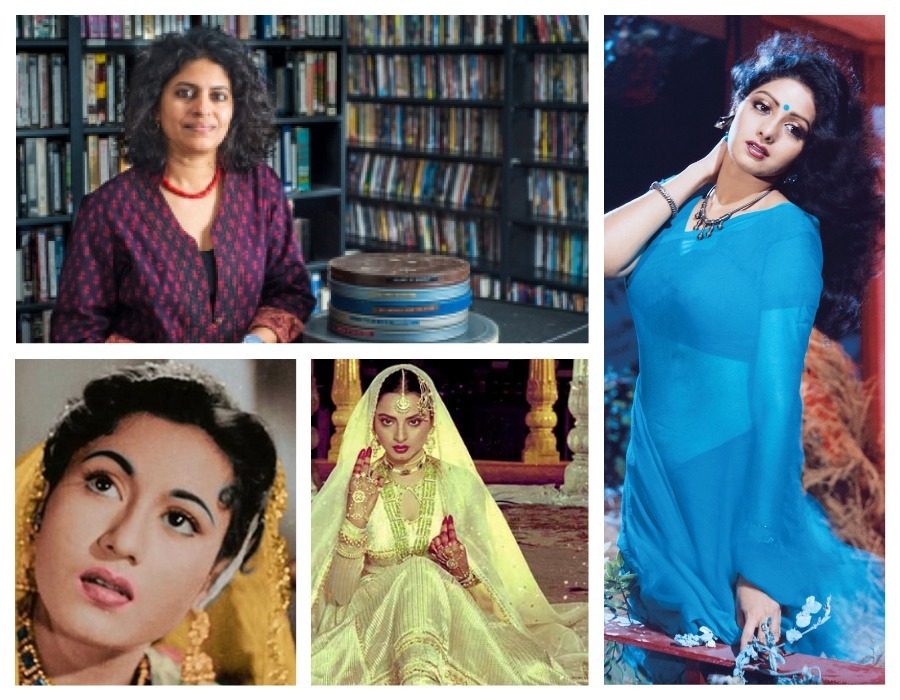Interviewed by Supriya DG
The Toronto International Film Festival in September rejoiced at the screening of four Indian Films, namely Jallikattu, Moothan, Bombay Rose and The Sky is Pink, this September. India generates the world’s largest number of films annually, yet historically, fewer films have been nominated, let alone screened at international film festivals. India’s no show at Cannes this year forces us to introspect the reasons for this absence, just as much as we are quick to revel in the visibility of the celebrities who attend the festival.
The screening and nomination of films in these festivals predominantly include films that are not made in America or Western Europe, traditionally lumped under the category of “world cinema”. The world of films comprises a complex ecosystem of creating and viewing cinema. However, the Eurocentric canons of what makes a “good” film may explain the neglect of films from other parts of the world. But today, the landscape of film production and consumption has a greater number of players than before. The scope for exploring and experimenting has found greater acceptance. This change is facilitated in great part by accessibility and dissemination, particularly over the internet. International Film Festivals then become an expansive platform for larger and diverse voices.

Academic engagement with film and media studies has been a long-standing one. However, as the cinematic experience undergoes a transformation, it becomes urgent that we reassess the way we enjoy, analyse and study cinema within academic spaces as well. Dr. Usha Iyer, currently an assistant professor of Film and Media Studies at Stanford University, and an affiliate faculty of both Stanford’s Center for South Asia, and Center for Comparative Studies in Race and Ethnicity, aims to re-energise these conversations.
In her interview with The Bastion’s Supriya D.G., Dr. Iyer puts into perspective why it is crucial that we interrogate and debate academic curricula in film studies. Stagnant curricula have larger implications on our roles and identities as makers and viewers of cinema. Dr. Iyer complicates cinematic categories such as ‘world’ and ‘international’. She persuades us to rethink the categories we use to define cinema so that they include a broader field of study. Her work is a timely indication for the need to shift away from box office figures and award ceremonies to an inclusive celebration of the creativity of human experience and endeavour.
Supriya D.G. (SDG) – The TIFF, like other international film festivals, has highlighted the need to re think global paradigms in cinema. Words such as “international” and “world” indicate a divisive perceptive. Could the way we revise these perceptions pave way for integrating global issues into courses on cinema?
Usha Iyer – Thanks so much for engaging with me on these issues of globalising the curriculum, Supriya! Like you say, it’s great that four Indian films were screened at TIFF this year. But the very fact that we note this as important speaks to the legacies of colonialism that decide what cities and festivals count as metropolitan and of “global” importance, and what is considered ‘provincial’.

The most interesting filmmakers (or artists, writers more generally) are often those who draw deeply from local histories and idioms. Certain works are seen to “translate” better to non-local audiences, and win acclaim as telling “universal” stories, like Satyajit Ray’s Pather Panchali did upon its release in 1955. However, as scholarship has demonstrated, the film meant very different things to audiences in Bengal, in the rest of India, and to festival audiences in Europe and America. This is at the heart of sensitising students to a genuinely global or “planetary” imagination – foregrounding regional specificities and relational networks, understanding how a work is received by different audiences, and how we ourselves receive and relate to films and other cultural products (as “art cinema” curated by festivals, as “popular cinema” for the masses that we might or might not identify with depending on our own class, caste, region identifications, etc.).
Understanding our own histories of taste formation – what we think of as good and bad art, high and low culture, avant-garde and kitsch, classical and popular, local and international etc. – is a good start to being self-reflexive about our syllabi and curricula.
In a course I’m teaching right now titled, “Love in the Time of Cinema,” for instance, we started with a film from the Dominican Republic, Sand Dollars, that is about a young Dominican woman who engages in long-term relationships with visiting European tourists in exchange for gifts and money, and an older French woman who says she is in love with her.
By starting the course with what is routinely described as a “small” film – referring to its small budget and its location in a “small” Caribbean island – we deliberately engage in a scalar shift to note what sex work and the work of love look like from this post-colonial location, where bodies and spaces continue to be used and monetised in particular ways. Starting from this location also “queers” western nomenclature for non-normative sexualities – do the terms bisexual or lesbian work in the same ways in the context of sex work, for example?
SDG: How is academia responding to the idea of global cinema and the change in the flow of film consumption? Technology has enabled cinematic production and today even democratised the process of film-making. But, because it has always had a “syncretic existence in the minds of people” to borrow your words, are we learning new ways or rediscovering other ways of looking at films?
UI – It was the German filmmaker Alexander Kluge who remarked, “cinema has existed for over ten thousand years in the minds of human beings” in the form of “associative currents, daydreams, sensual experiences and streams of consciousness. The technical discovery only made it reproducible.”
This de-centres the origins of the cinema (or the printing press, the computer etc.) from its technological birth to shift the focus to how these new technologies come to be in conversation with older, local storytelling, performance, and artistic traditions.
The same film apparatus produces very different styles and narratives in say, America, Japan, and India in the 1950s. This is not to say that all these film cultures are not in constant conversation as well. Rather than fix centres and peripheries, beginnings and derivations, active and passive cultures, employing a global perspective encourages fluidity, and new ways of imagining transnational flows. It complicates the ‘fixed’ histories of media and technologies.
SDG – You talk about the universal application of Western theories. Does the notion of “male gaze” for example become irrelevant in the context of Hindi cinema?
UI – Popular Indian cinema has very much been in conversation with American and European cinemas from the late 19th-early 20th century. So, rather than say that the concept of the male gaze is not relevant to Hindi cinema, I’d say it might operate slightly differently based on the other traditions that this cinema is drawing from.
Consider, for example, the theorisation of “darshan” by Indian film scholars who compare the film spectator’s gaze upon the on-screen star as similar to that of a devotee upon a deity, founded on the presumption of an exchange of the gaze, where the deity looks back at the devotee. This inflects on-screen performance (the hero/heroine will often have a marked “entry” that fans eagerly await) and suggests a unique way in which the spectatorial gaze is organised in popular Indian cinema.
The feminist film scholar, Laura Mulvey, discusses in a forceful essay, “Visual Pleasure and Narrative Cinema,” how “Hollywood equates femininity with spectacle, and builds the way the on-screen woman is to be looked at into the spectacle itself.” In my study of dancing women, it is obvious that the Hindi film dance number has been a predominant arena for the display of the female body as an icon of male desire. (Editor’s Note: A representative example, Aishwarya Rai Bachchan’s performance of Silsila Ye Chaahat Ka has been included below.)
But through close reading and analysis of industrial practices, I argue that the dancing actress is not merely an object of the male gaze but that her dancing opens avenues for exerting agency and authorship. She provides an impetus for technological changes, production innovations in cinematography, makeup and costume, sets, props, and editing, often enabling the authoring of women-centric narratives. So it’s about taking theoretical assertions and closely examining if they shift when considered in a different context, even as all these film traditions are speaking to each other in very nuanced ways.
SDG: Your work has opened up a space for ongoing interrogation in film curricula. How do you queer this space, while also ensuring that this process is self-reflexive?
UI – I wish we could imagine a world where a critique of the power structures inherent in what we study becomes the norm! More specifically, ensuring diversity in our courses is a constant process that cannot be accomplished once and for all and checked off. So even as we expand the canon to address different regions and cultures, we will constantly encounter our own blind spots. This becomes a recursive and profoundly enriching experience of self-reflexivity in teaching and learning that pays attention to inclusions and erasures, asking ourselves: why do we teach the texts we teach, what is left out, what would students like to see included?
SDG: You show examples of fandom in not only challenging global flows but also in spectatorial desire. How do we navigate the tightrope between learning and manifestation of desire, particularly in the context of a viewer/spectator?
UI – Our intellectual interests and labor are deeply tied to our pleasures and desires. When we move away from the body-mind, emotion-reason binaries, we begin to acknowledge the enfoldings of our sensory pleasures and cognitive interests (the two not being separate).
For instance, fan videos of Shah Rukh Khan song-and-dance sequences might have begun with deep audio-visual pleasure in watching these musical numbers, but they also entail a lot of learning and labor in making exactly matching fan videos. Academics, especially in the Humanities, are increasingly paying attention to “guilty pleasures” as serious foundations for research agendas. Women and Gender Studies departments showed us how important it is to study forms like melodrama, romantic novels, fan magazines, gossip about celebrities, etc. that were treated as women’s entertainment and not worthy subjects for the academy.
This reassessment of the very criteria of what constitutes serious academic knowledge has been remarkably liberating, and invites students to bring their whole selves to the classroom, not a narrow sliver of what is assumed to be a ‘properly scholarly’ interest.
Views expressed are personal.






